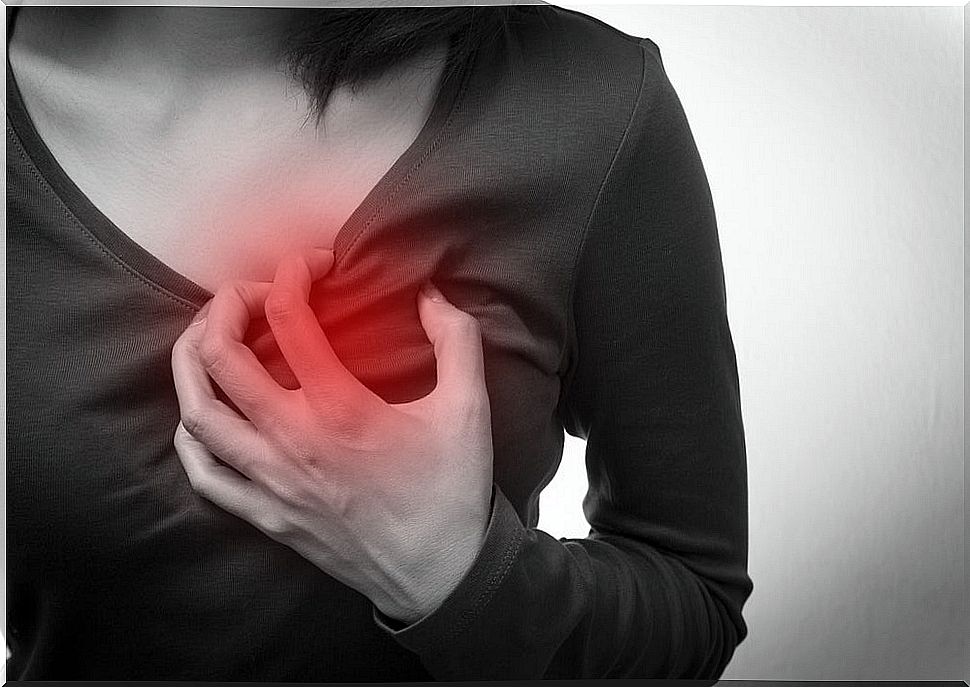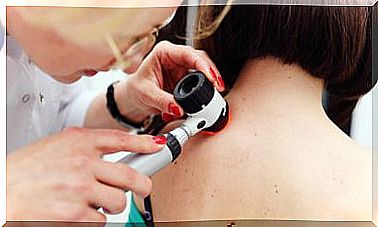Learn To Identify Heart Attack Symptoms In Women
Heart attack symptoms in women are often more difficult to detect than in men, as they are confused with common conditions. However, it is essential to know them to learn to identify them.
Heart attack is one of the heart diseases that can affect both men and women; however, its clinical manifestations differ according to gender. How to identify heart attack symptoms in women?
Ignorance of the disease is one of the reasons why the number of female victims has increased in recent years. Since the warning signs are confused with other common conditions, women take longer to see a doctor.
Most worryingly, the lack of timely care can trigger fatal consequences in most cases. Therefore, it is essential to know why it develops and what initial signs help to recognize it before it is too late.
Why does a heart attack occur in women?
A myocardial infarction, also called a heart attack, occurs when blood flow to the heart is blocked. This situation is usually the result of narrowing of the arteries , either by the accumulation of lipids such as cholesterol or by an arterial “spasm”.

Disruption of blood circulation can damage part of the heart muscle. Although treatments have improved significantly, it is still a leading cause of death in both men and women.
Risk factor’s
There are several factors that contribute to the accumulation of fatty deposits on the arterial walls. However, many of these can be avoided by adopting healthy habits. Let’s see the most common below.
- Be over 50 years old
- Consume cigarettes and alcoholic beverages
- Have high blood pressure
- Uncontrolled high cholesterol and triglycerides
- Suffering from diabetes mellitus
- Having a family history of heart attack
- Lead a sedentary lifestyle
- Suffering from obesity and being overweight
- Being exposed to situations of constant stress
- Eat a diet rich in cholesterol and saturated fat
Heart attack symptoms in women
Heart attack symptoms in women are not accurate and are less obvious than in men. Because of this, almost all of them take longer to go to the doctor when they notice that something is not right. However, it is important to know them, because perceiving them can help to achieve a timely diagnosis.
Shooting pain in the chest
One of the most common heart attack symptoms in women is throbbing pain in the chest. It is described as a feeling of tightness in the chest that lasts for a few minutes. In addition, it can occur intermittently, in different intensities.
Pain in the arm
Chest pain can radiate into one of the arms, being an obvious sign of a heart attack. This symptom, which also affects men, often occurs on the left side.
Cold sweat
The sudden appearance of a cold sweat can be interpreted as one of the symptoms of heart attack in women. Although there are several possible triggers, interference with blood flow can be the cause.
Feeling anxious
There are many situations that can lead to an anxiety attack. Despite this, it should not be overlooked, as it sometimes warns of uncontrolled heart rhythms. If that feeling of anxiety is accompanied by chest pain or vertigo, it is best to see a doctor.
Shortness of breath
A feeling of suffocation or shortness of breath can appear suddenly before a heart attack in women. It can be perceived during rest or during minimal physical activities. You may need to take deep breaths to breathe.
Unusual tiredness
Chronic fatigue that interrupts the day is one of the most ignored heart attack symptoms in women. Since there are many possible causes, hardly anyone pays enough attention to it. However, in this case it could derive from poor circulation and cardiac overexertion.
Daze
Heart attack does not usually cause immediate fainting in women; however, when it is developing it can produce a feeling of lightheadedness and dizziness that increases with the hours. Of course, this is often accompanied by chest pain.

Nausea or vomiting
Women are twice as likely as men to have nausea and vomiting during a heart attack. These signs are often overlooked, as they are thought to originate from digestive conditions such as indigestion.
Acid reflux
Acid reflux is a symptom characterized by a strong burning sensation in the chest and upper stomach. Although few cases have to do with a heart attack, the possibility should not be ruled out if it comes from several of the symptoms mentioned above.
When to go to emergencies?
The sooner you go to the doctor, the better the prognosis for a heart attack. Therefore, as soon as several of the aforementioned symptoms are perceived, it is essential to see a doctor. Similarly, it is convenient to seek immediate attention if you have a family history or any risk factor.









